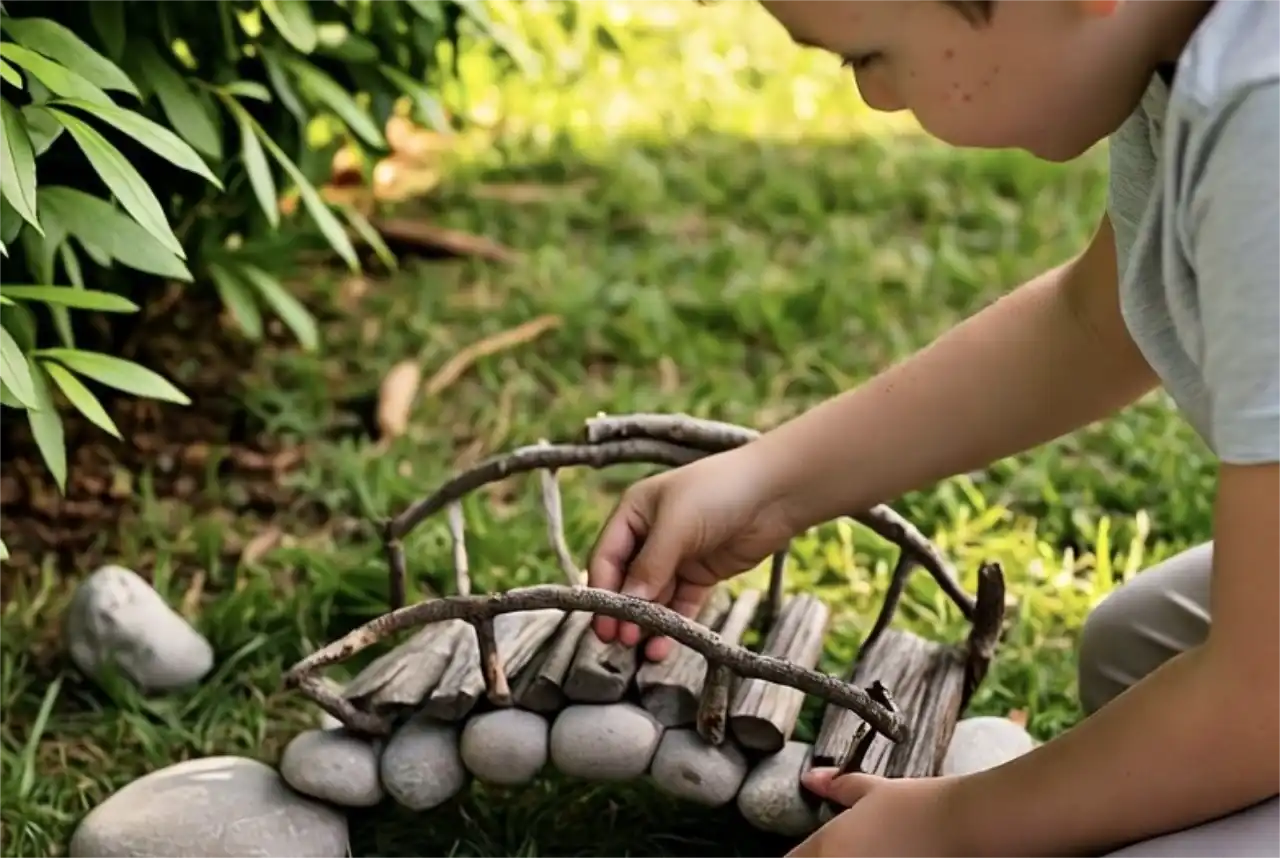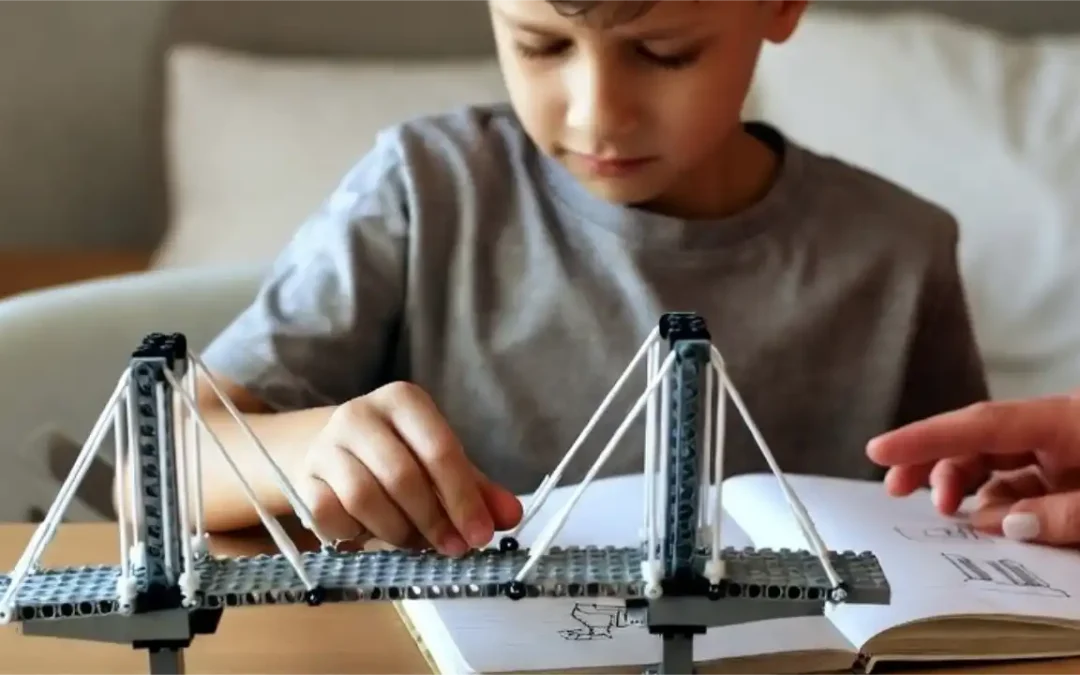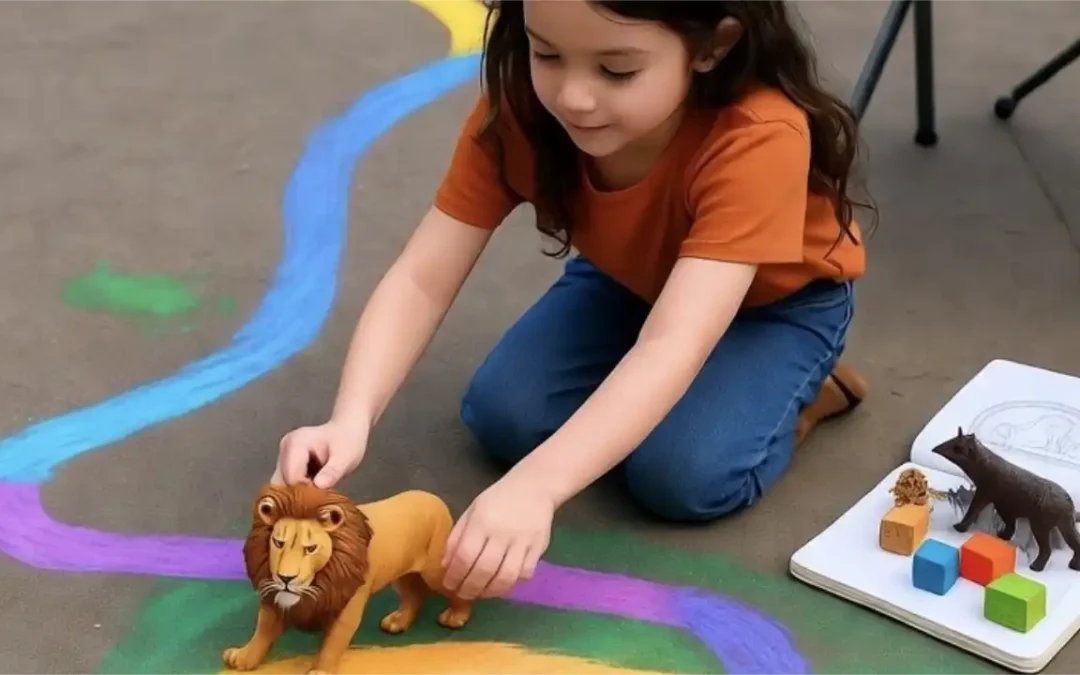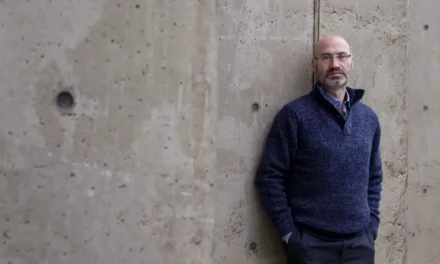
Encouraging Exploration of Interests: Notice Interests and Ask Questions
M
y son once crouched in the backyard, quietly arranging sticks with the intent focus of a builder lost in thought. I sat beside him and asked, “What are you making?” “A bridge,” he said. That one question opened the door to a shared project: we added stones for supports and tied parts together with string. As the bridge took shape, he began solving small design problems—how to balance the span, where to place the strongest pieces—and explaining his thinking out loud. What started as idle play turned into a creative routine. Each weekend, we tried something new: a clay dam, a twig tower, a leaf-covered road. These projects weren’t just imaginative—they trained him to revise, persist, and take pride in his evolving ideas.
Over time, he wanted to share his work. He brought models to school, explained them to classmates, and asked for feedback. When a teacher praised one of his designs, he lit up—not just from the compliment, but from the realization that his ideas mattered to others. With every new model, he talked more fluently about how it worked and why he made certain choices. This kind of self-expression—built through dialogue and iteration—carried over into group work, writing, and even classroom debates. By being asked thoughtful questions early on, he’d learned to think through his process and speak clearly about what he created.
The simplest act—pausing to notice your child’s interest—can unlock a habit of exploration that shapes how they learn and express themselves. When you ask, “What are you building?” or “What’s the story here?” you invite them to reflect, revise, and grow. Keep a notebook of their evolving projects or photos of what they’ve made. These small steps show them their work matters and give them confidence to keep inventing. The questions you ask today build the voice they’ll use to explain their ideas tomorrow.
Encouraging Exploration of Interests

Encouraging Exploration of Interests: Test Ideas with Simple Questions
Asking “why” and “how” teaches children to think. Guide reasoning gently with simple questions that deepen understanding and curiosity.

Encouraging Exploration of Interests: Offer Age-Appropriate Creative Activities
Creative activities should match a child’s stage of growth. Learn how to choose projects that inspire joy, challenge, and self-expression.
Table of contents

Primordial Soup for the Mind: Navigation
Navigate the book Primordial Soup for the Mind.
TIPS
- Ask “What is this about?” to start exploration.
- Listen to show you value their ideas.
- Keep a notebook for their interests.
- Suggest new projects weekly.
ACTIVITIES
- Shape Play: Watch their hobby, ask, “What is this about?” Create for 10 minutes.
- Model Build: Make a model, talk about their ideas, 15 minutes.
EXAMPLE
My daughter sorted shells, saying, “It’s a wave!” Her patterns started a beach art hobby.

Download “Primordial Soup for the Mind: A Parent’s Guide to Nurturing Intellectual Growth”
Enter your information to get this article and hundreds more as part of the FREE book Primordial Soup for the Mind.
Share your thoughts with the Thought Academy community in the Comments section below.

Sharpen those skills!
Enter your information to get our FREE practice exercises so you can hone your critical thinking and reasoning skills!







0 Comments